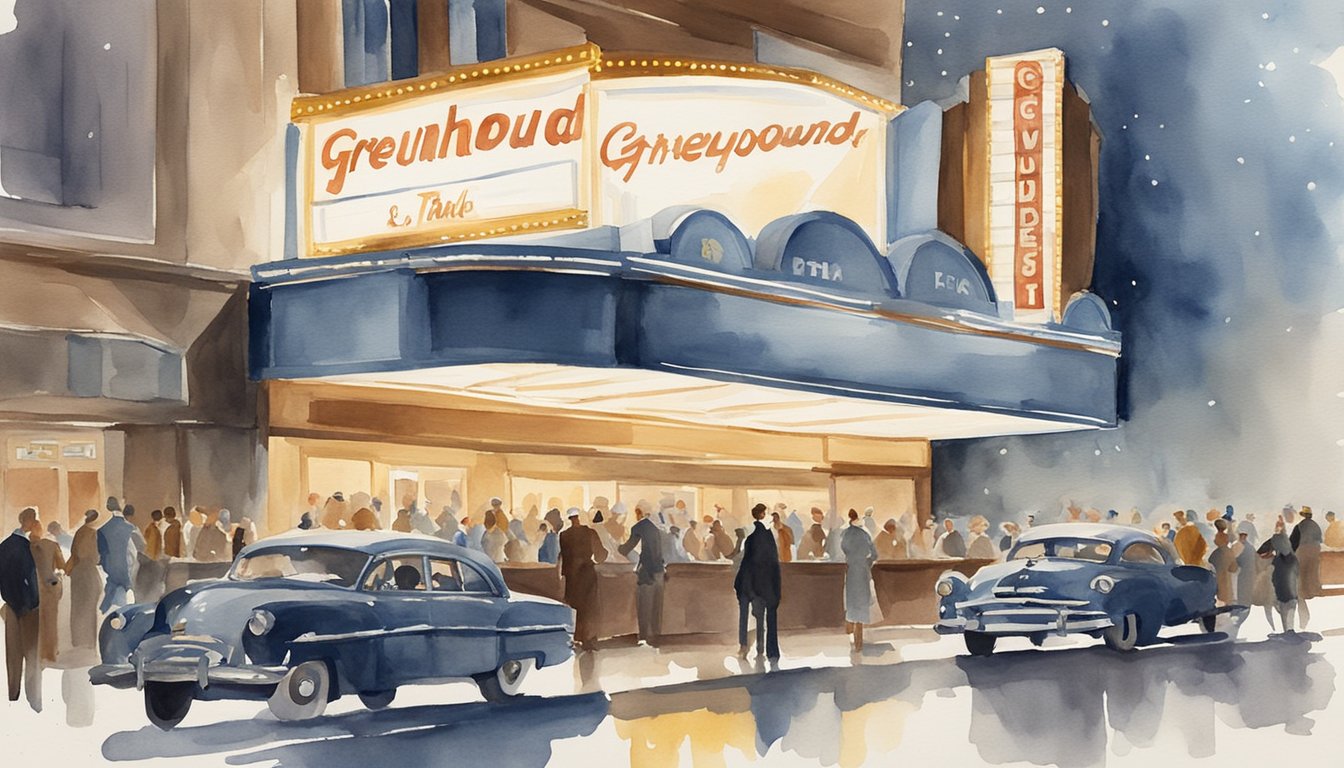Greyhound Movie Overview
Tom Hanks stars in the thrilling war drama Greyhound, where he plays Commander Ernest Krause, a seasoned naval officer on his first wartime assignment during World War II. The film, directed by Aaron Schneider, portrays the intense Battle of the Atlantic, as Krause leads an international convoy of ships over the treacherous North Atlantic while being hunted by German U-boats.
Based on the novel The Good Shepherd by C.S. Forester, the screenplay, also penned by Hanks, invites audiences to experience the tactical maneuvers and psychological strains of the historical naval warfare. A significant theme is the perseverance and determination of the Navy men fighting against daunting odds to ensure the safe passage of their convoy in a pivotal period of the Atlantic theater.
The movie highlights the technology and strategies employed in naval battles, giving insight into the rigorous conditions under which historical figures like Krause operated. With high-quality production and meticulous attention to detail, Greyhound captures the essence of naval warfare in an era where strategic decisions had to be made in split seconds.
Officially released on Apple TV+, the movie offers a compelling blend of tense action sequences and the emotional turmoil faced by those at sea. It dives into the duties and sacrifices of sailors, as they navigate not only the physical dangers but also the harrowing solitude of leadership and the weight of responsibility.
Greyhound provides a riveting cinematic experience, shining a spotlight on a less often discussed part of World War II – the warships and their crews, braving the unforgiving waters of the Atlantic. The film’s focus on operational challenges, stark realism, and character-driven storytelling, all combine to provide a fascinating glimpse into a critical moment in history. Greyhound and Military Technology on Film
Production and Release

The military drama Greyhound, featuring Tom Hanks and directed by Aaron Schneider, encountered a distinctive release path due to the advent of the COVID-19 pandemic, adapting to the shift from traditional theatrical premieres to digital platforms like Apple TV+.
Development and Filming
Greyhound, penned by Tom Hanks, is based on C.S. Forester’s novel “The Good Shepherd”. The film, which stars Hanks as commander Ernest Krause, is Hanks’s first screenplay produced into a film. Alongside him, Stephen Graham, Elisabeth Shue, and other talents join the compelling World War II narrative. Directed by Aaron Schneider, who brings to the table his eye for detail, the film captures the essence of war at sea.
With Columbia Pictures and Sony Pictures initially set to distribute the film, the production saw Hanks collaborating again with producer Gary Goetzman after their work on Saving Private Ryan. Production took place in Louisiana and at sea near the Canary Islands, with some scenes shot in Liverpool, providing authentic maritime backdrops and settings.
Distribution and Reception
The normal trajectory of a theatrical release was disrupted by the global onset of the COVID-19 pandemic, leading to an innovative distribution model. Ultimately, Sony Pictures sold the distribution rights to Apple, which released Greyhound on its subscription service, Apple TV+. This move reflected the changing landscape of film viewership, as audiences increasingly turned to streaming platforms due to the closure of theaters.
Despite its digital release, Greyhound received positive reviews from both critics and the audience. The film, which was rated PG-13 due to war-related violence and brief strong language, connected with subscribers and became one of the early examples of high-profile movies finding success outside of traditional cinema rollouts. This not only demonstrated the resilience of the industry in adapting to new distribution models driven by necessity but also hinted at a more flexible future for film releases.
Historical Context and Themes

The movie Greyhound is steeped in the grim reality of WWII, depicting an intense war-related action that focuses on the Battle of the Atlantic. It is based on C. S. Forester’s novel “The Good Shepherd” and showcases a pivotal period when German U-boats threatened Allied merchant ships.
Factual Accuracy
The film Greyhound presents a tension-filled portrayal of the U.S. Navy’s battle against German submarines during WWII. It specifically focuses on an Allied convoy crossing the treacherous area called “the Black Pit,” where air cover was minimal and the threat of hidden German U-boats was ever-present. The depiction of war-related action is accurate to historical events, involving depth charges and torpedoes as weapons of choice during these fraught naval encounters.
Moral and Leadership Exploration
At the film’s heart is a study in leadership, with Tom Hanks portraying Navy Commander Ernest Krause. This character leads the titular Greyhound destroyer, bearing heavy moral responsibility and exploring themes of leadership during crisis. The screenplay, adapted by Hanks himself, is inspired not just by Forester’s work but also by historical accounts of U.S. Navy commanders who faced harrowing decisions akin to those made by the fictional Commander Ernest Krause. Hanks draws from his experiences in previous WWII films, such as “Saving Private Ryan” and “Band of Brothers,” to deliver a character study in courage and command under pressure.

